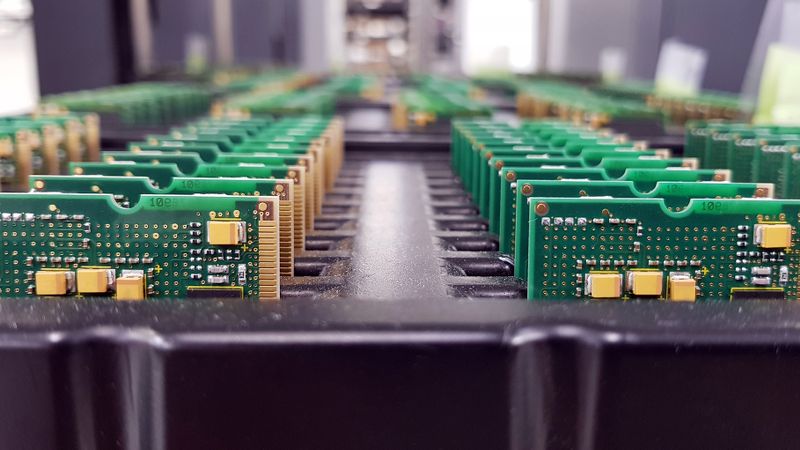Supply Chain Resilience For PCB
Maintaining supply chain resilience in the face of increasing global uncertainty.
The PCB supply chain has come under unprecedented strain, with surging material and energy costs, bottlenecks caused by resurgent post-Covid demand, disruption in China, and geopolitical uncertainty all creating a perfect storm.
PCB manufacture takes the challenges associated with supply chains to another level due to the sheer diversity of components and raw materials needed. The greater the number and types of materials, the more vendors, manufacturers, and transport methods become part of the equation.
In this article, we will look at the central issues impacting PCB supply chains, how and why they have had such an impact, and examine the measures which can be taken to deal with those challenges.
Disruption in China
Over the last two decades, China has moved to dominate the PCB market and this has been reflected in the sector’s decline elsewhere. From 2000 to 2015, the number of PCB manufacturers in the USA shrunk from 2,500 to just 145.
The former administration hit back with tariffs on trade which impacted on the import from China of some components used by PCB manufacturers.
In addition to trade issues, the Chinese manufacturing sector has struggled with power and labor shortages, while the hard-line approach taken by the government in controlling Covid outbreaks has also led to disruption. Last August the Port of Ningbo—the world’s third busiest—was closed because of a single COVID-19 case. Earlier in the year the Port of Yantian—the world’s fourth busiest—shut down due to 150 cases.
Skittish about these issues, a report by Gartner found this had led businesses to pull back on integration and try to find ways to keep supply chains more local.
ESG
Something which is becoming increasingly prominent is Environmental Social Governance (ESG). Companies and consumers increasingly want to do business with firms that can prove they are mitigating the impact on the environment.
It will become increasingly important to source PCB materials in a way that keeps a company’s carbon footprint to a minimum. In a practical sense, this could mean dealing with a supplier that is closer to their manufacturing base and could supply them by rail or road, even if cost and reliability is less attractive than sourcing them from a supplier further afield which has to fly them in or transport them across oceans.
The global impact of Covid
The pandemic had a dual impact on PCB manufacture, increasing demand while at the same time constricting supplies. In the early days of the pandemic, Covid’s impact on China caused significant disruption to global supply chains in the electronics industry with around 30 PCB makers centred around Wuhan alone.
In early 2020, IPC, an electronics equipment trade organization, surveyed 150 electronics suppliers and manufacturers which found 65% reported delays from suppliers. As economies went into lockdowns, the need for many goods, supplies, and energy also fell off a cliff. But as those lockdowns lifted that appetite rebounded sharply. But this caused bottlenecks, with supply chains unable to match resurgent demand.
This was compounded by an increased requirement for electrical devices prompted by industries which underwent a boom as a result of Covid, notably the medical industry and anything related to remote working. But another impact which Covid had, was a shift in philosophy. Firms had to operate under new restrictions, they had to find new and smarter ways of doing business and keeping things flowing, and that has left a lasting impression.
A survey of business leaders by Mckinsey found 93 percent intended to make their supply chains far more flexible, agile, and resilient in the coming years. A study by KPMG found this had brought about a fundamental shift in priority from cost to resilience. This is a fundamental shift which can not be overstated.
Conflict in Ukraine
With the world already witnessing pressures on supply chains due to bottlenecks caused by a rapid global bounce-back in post-Covid demand, the Russia-Ukraine crisis has caused even greater uncertainty.
A report by Dun & Bradstreet found more than 600,000 businesses around the world rely on Russian and Ukrainian suppliers, while the conflict is also increasing pressure on energy prices, with research revealing that European gas storage levels are ‘critically low’ at 33% of capacity.
Some raw materials such as neon, C4F6, palladium, nickel, platinum, rhodium, and titanium, are exported from Russia and Ukraine and the conflict could lead to a spike in prices, according to research company Counterpoint. With neon and palladium especially central to PCB production, the shocks could be felt by manufacturers the world over.
Despite this, some chip companies in the USA said they expected limited supply chain disruption due to the conflict due to the stockpiling of raw materials and diversified procurement, but some industry experts said there could be an impact in the longer term.
Supply chain resilience
But what do we mean when we talk about resilience in the context of supply chains? In essence, it refers to a company’s ability to maintain the flow of the materials and resources it needs in the face of both long-term strategic challenges – such as geopolitical instability – or shorter term, unpredictable problems such as adverse weather or the collapse of transport companies such as shipping firms or airlines.
How able and ready is a particular company to shift from one method of transporting what it needs to another if a route or means of bringing in what it needs is blocked? How quickly can it move to a different supplier if, for example, sanctions are placed on its current one or a border is closed?
The reason it matters is that without a reliable supply chain, companies can neither maintain operations for very long, nor can they make long term plans. Unless supply chain contingencies are in place which are robust and reliable, companies can find themselves ‘firefighting’, where they are constantly looking for new suppliers and new transport methods, this can lead to even higher costs and an unpredictable flow of the supply chain.
Building resilience
Building a resilient supply chain is all about having alternatives that can be switched to at short notice to mitigate disruptions and keep things moving. As mentioned earlier, cost is now less of a factor for business leaders than whether these measures will work.
The main methods of building this resilience are:
Diversify supply chains:
One of the most effective ways to ensure supply chain resilience is to diversify suppliers, with a combination of offshore and near-shore suppliers for each component. Another strategy is to have a regional supply chain as well as a global one, providing a built-in redundancy so that if one is impacted then another can be relied upon.
Be agile:
Companies must change their mindset about how rapidly they can pivot to secure supplies from different manufacturers. This is a legacy from how companies that survived and even thrived during the pandemic, were able to make quick decisions and bring forward changes in a matter of weeks and months which would have otherwise taken years.
A survey of executives by McKinsey found that their companies had accelerated the digitization of their customer and supply-chain interactions during the first six months of 2020 at a rate that would normally have taken them three or four years to achieve.
Changing how big companies operate used to be likened to turning around an oil tanker, but with management and leadership that now have this new mindset, adapting in the face of supply chain issues can be done quickly.
Part of this mindset also involves scanning the horizon for possible problems. We should now be trained to expect disruption. So what issues are likely to arise next month or even next year that may have an impact? With that in mind, what are the people at your company doing about it now?
Conclusion
Supply chains are under unprecedented strain. China’s systemic problems have been exposed in recent years, while Covid has created a bottleneck of demand. The Russia-Ukraine crisis and wider geopolitical uncertainty is also creating uncertainty.
One of the deeper impacts of Covid was to make companies reassess both their ability and willingness to quickly pivot to new ways of working, and that has left a legacy. They are looking for resilience now as the main factor in their supply chains rather than keeping costs low.
They want and need to be able to maintain integrity in the event of short-term shocks and longer-term challenges.
To do this, supply chains must be diversified with regional and global suppliers both part of the solution, while a willingness and readiness to be flexible and adapt quickly to challenges is also a central pillar of maintaining that resilience. Building reserves of vital components is also an important part of the solution.
By undertaking these measures, companies can maintain supply chains in the face of headwinds both now, and further down the line.
About the sponsor: MacroFab
MacroFab is an electronics manufacturing digital platform that provides production options throughout North America. MacroFab aims to make it faster and easier to bring new electronic products to market through their software-driven approach to electronics manufacturing.
References
2. https://www.nytimes.com/2021/10/13/business/china-electricity-shortage.html
3. https://www.wsj.com/articles/chinese-factories-are-having-labor-painswe-can-hardly-find-any-workers-11629883801
4. https://www.gartner.com/smarterwithgartner/diversifying-global-supply-chains-for-resilience
5. https://www.tti.com/content/ttiinc/en/resources/marketeye/categories/industry/me-custer-20200219.html
7. https://www.mckinsey.com/business-functions/operations/our-insights/how-covid-19-is-reshaping-supply-chains
8. https://home.kpmg/uk/en/home/insights/2020/09/uk-ceo-outlook/the-no-1-risk-to-your-business-your-supply-chain.html
9. https://www.dnb.com/perspectives/russia-ukraine-impacts-global-supply-chain.html
10. https://www.counterpointresearch.com/ukraine-crisis-brings-fresh-wave-uncertainty-semiconductor-industry/
11. https://www.cnbc.com/2022/02/24/chipmakers-see-limited-impact-russia-invasion-ukraine.html
12. https://www.mckinsey.com/business-functions/strategy-and-corporate-finance/our-insights/how-covid-19-has-pushed-companies-over-the-technology-tipping-point-and-transformed-business-forever


